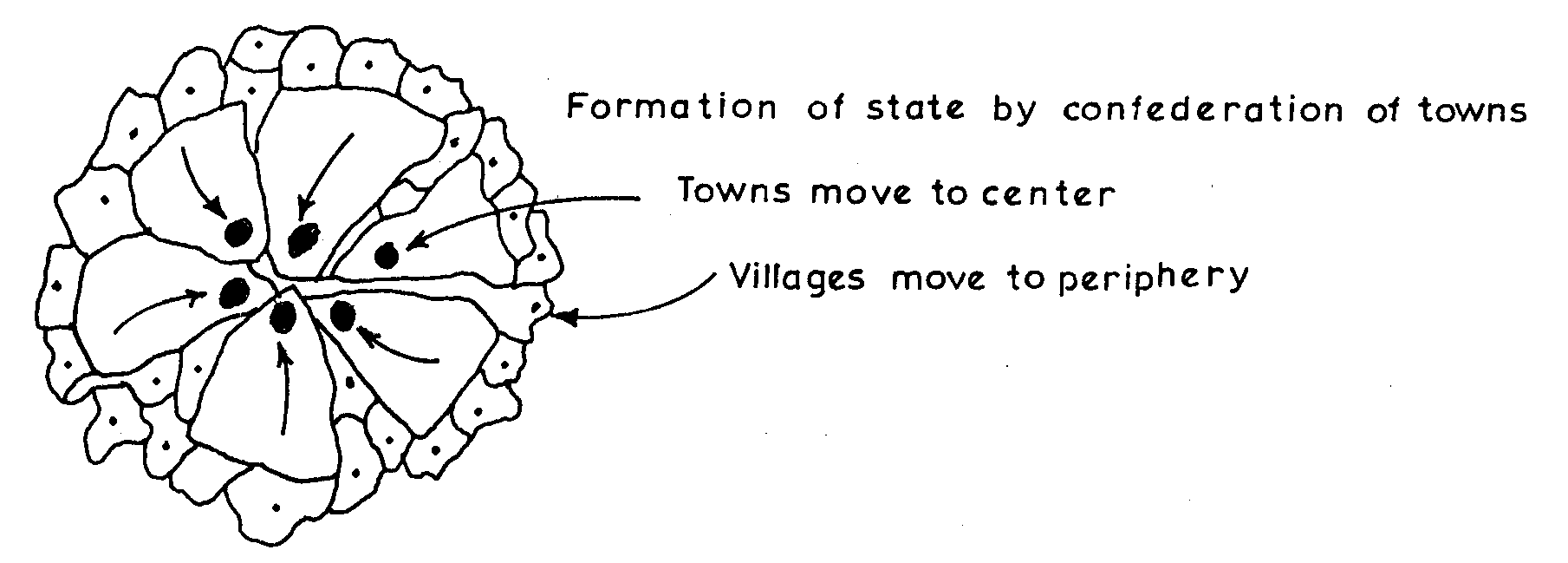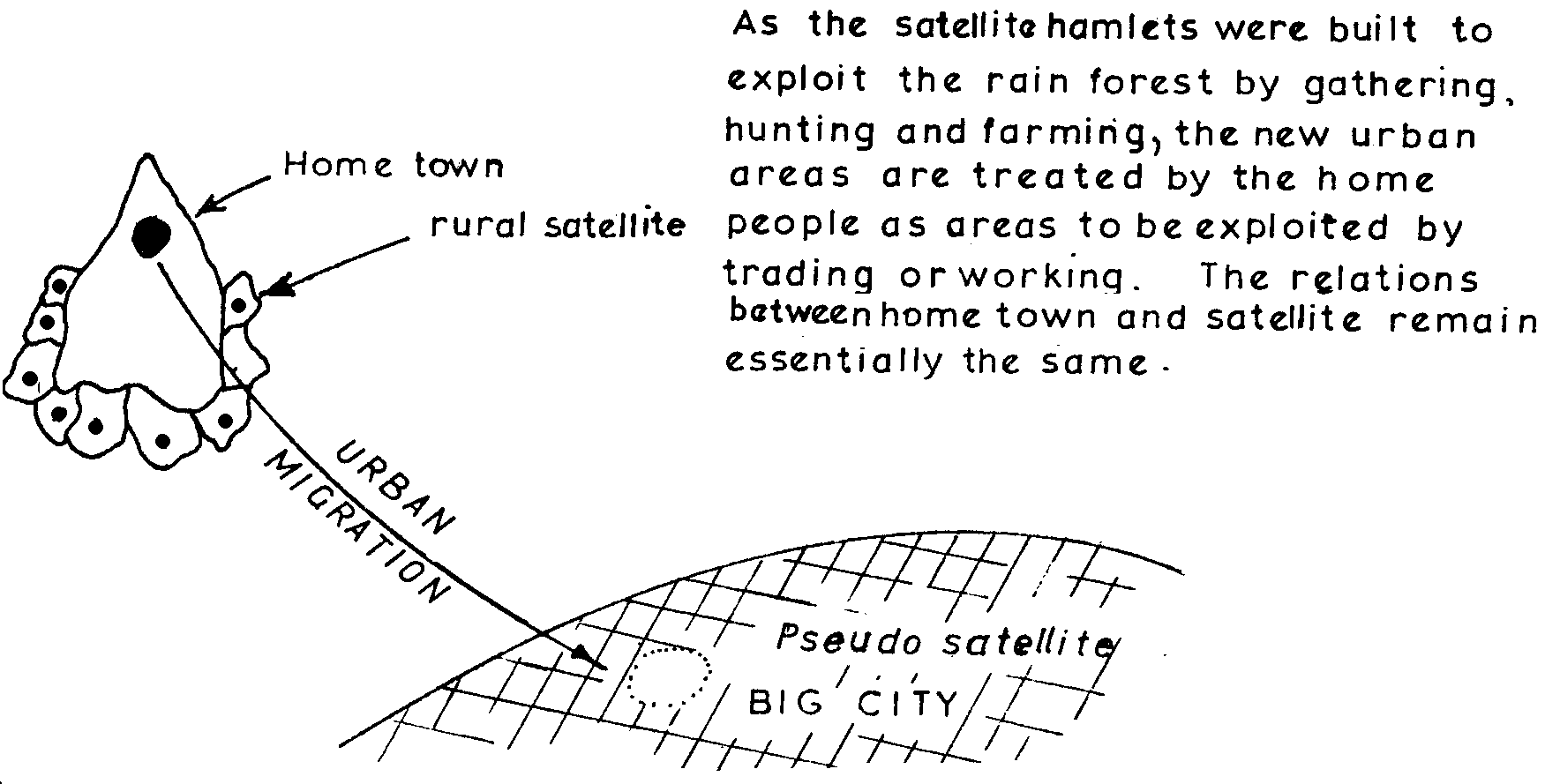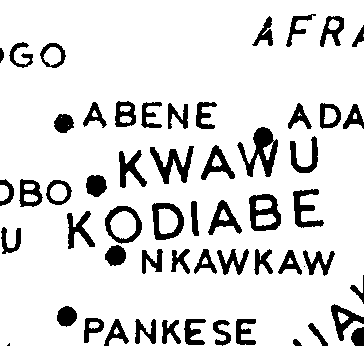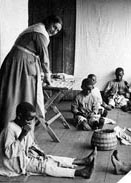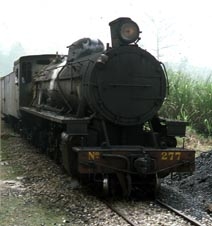|
|
The conversion from Guan to Akan culture and social organization, was more than a conversion from patriliny to matriliny and from round houses to square courtyard houses. There was a corresponding change from dispersed settlements based on single patrilineages to nucleated settlements based on confederations of matrilineages. The settlement pattern, like many other changes, contributed to a more organized and effective society for engaging in warfare for the control of trade routes. A key feature of this change is that matriliny is not the mirror image of patriliny. The difference is because of the social roles of women and marriage. In a patrilineal system, a women may leave her lineage, and there is no break in the continuity of the lineage. All members of the lineage trace their membership through their fathers. In a matrilineal system, the women may marry, but must still retain their membership in their lineage. High separation and divorce rates, therefore, are functional in matriliny. The period of bearing and raising children will contribute to temporary residence groups that resemble the nuclear family in a matrilineal system, whereas the marriages and subsequent residential groups are more permanent in in a patrilineal system. Meanwhile the matrilineal system requires different exogamous lineages to be located closer to each other so that women can remain active in their marriages and in their lineages. Agricultural production was another factor in this change. The technology was based upon slash and burn, where some land was left to grow back into bush after it had been farmed for some time. As settlements became larger, a result of the confederation of lineages, then the lands closest to residences could no longer sustain the population with food. Where the distance to the farms became longer, then temporary satellite farming villages were set up, first simple affairs for an overnight stay. With the increased populations in the confederated settlements, satellite villages became larger and more elaborate.
As its population increased, farmers (women) might have to camp overnight, and so little hamlets are created. The forty day cycle had some sacred days where farming (ie weeding) was not permitted, but allowed farmers to pick up crops harvested the previous day, and return to the home settlement with them.
The two sketches above represent the earlier Guan settlements, and when Akan groups move into a new area.
This is also the basis of the Akan Home-Away pattern, where residence is more likely based on matriliny in the home town, but often resembling the nuclear family in the away satellites. A married woman and man may live together in the satellite village, yet when they return to the home town for a funeral or festival, they often sleep in separate houses, each in the stool home of their respective matrilineage. This is the basis of the notorious pattern of children going from the mother's house to their father's house in the late afternoon, carrying supper.
With the modern growth of urbanization, and the capital city, Accra, on the coast, the same pattern continued. The city is equivalent to the satellite village. Couples would live together in the city, yet often part to their respective matrilineages when visiting or retiring to their home town. This dichotomy leads to social scientists being misled, thinking that urbanization has more of an effect on the growth of the European style nuclear family than is the case. An interesting variation here is the
modern town of Nkawkaw. The town
was only a small hamlet until the arrival of the railway
between Accra and Kumase. Today it is the commercial hub of the Kwawu
District. In terms of the Akan political structure, it is only a
satellite of the town of Obomen, one of the stool towns under Obo in the
Nifa Division of Kwawu. Because of its size and commercial importance,
the matrilineage of Nkawkaw has been struggling over the decades to become
recognised as a stool town in Kwawu. The council of chiefs is very
resistant to the attempt.
|




